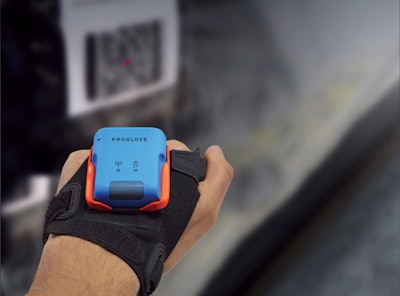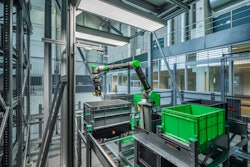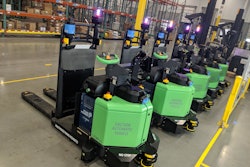
Over half (56%) of warehouse and logistics leaders are currently utilizing industry wearables to improve efficiency in the warehouse, according to new research from ProGlove.
“The potential is huge for human-machine collaboration,” says Stefan Lampa, robotics pioneer and CEO of ProGlove, “Undoubtedly, the number of organizations relying on automation will increase in the coming years. It’s an enormous undertaking that will bring with it a significant change in people’s work. However, there are many different boxes to be ticked in a warehouse’s total operations. As a result, the mental acuity, agility and problem-solving skills human workers provide will have a significant part to play for years to come. Over the next decade, connecting those human qualities with the power of automation technologies will be a key part of success.”
Key takeaways:
- 42% of respondents are certain they will invest in industrial wearables to improve warehouse operations in the next five years. Meanwhile, less than one-quarter of respondents are currently using full automation.
- Semi or partially-automated systems were identified as a top priority by 49.4% of respondents, closely followed by artificial intelligence (AI) technologies at 46.9%. Industry wearables remain an important focus for investment among respondents, while 42% are planning further implementation of industry wearables. Full automation is a priority for just 30.6%.
- The research also examined the utilization rates for partially and fully automated systems. The results show that 34.5% of companies currently utilize semi or partially-automated systems, and just 22% have implemented full automation.
“The results clearly demonstrate the vital role of industrial wearables and semi-automated technologies. The area has enormous potential. As we enter a new era of operational excellence, they will no doubt play an even more crucial role in facilitating collaboration between humans and machines, enabling them to work seamlessly together,” Lampa says.




![Pros To Know 2026 [color]](https://img.sdcexec.com/mindful/acbm/workspaces/default/uploads/2025/08/prostoknow-2026-color.mduFvhpgMk.png?auto=format%2Ccompress&bg=fff&fill-color=fff&fit=fill&h=100&q=70&w=100)







![Pros To Know 2026 [color]](https://img.sdcexec.com/mindful/acbm/workspaces/default/uploads/2025/08/prostoknow-2026-color.mduFvhpgMk.png?ar=16%3A9&auto=format%2Ccompress&bg=fff&fill-color=fff&fit=fill&h=135&q=70&w=240)







